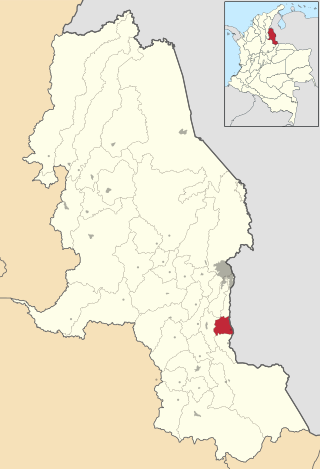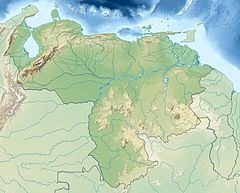
The Orinoco is one of the longest rivers in South America at 2,250 kilometres (1,400 mi).

Apure State is one of the 23 states of Venezuela. Its territory formed part of the provinces of Mérida, Maracaibo, and Barinas, in accordance with successive territorial ordinations pronounced by the colonial authorities. In 1824 the Department of Apure was created, under jurisdiction of Barinas, which laid the foundations for the current entity. In 1856 it separated from Barinas and for the first time Apure appeared as an independent province, which in 1864 acquired the status of state. In 1881, however, a new territorial division combined Apure and Guayana to form a single state named Bolívar. In 1899 it reestablished its autonomy and finally, by means of the Constitution of 1909, gained its current borders.

The Second Republic of Venezuela is the name used to refer to the reestablished Venezuelan Republic declared by Simón Bolívar on 7 August 1813. This declaration followed the defeat of Domingo Monteverde by Bolívar during the Admirable Campaign in the west and Santiago Mariño in his campaign in the east.
The Republic came to an end in the following year, when Caracas was reoccupied by the Royalists on 16 July 1814, after a series of defeats at the hands of José Tomás Boves.

Guárico River is a river in Venezuela.

Zulia River is a river in Venezuela and Colombia. It is a tributary of the Catatumbo River. The Zulia forms a small part of the international boundary between the two countries.

Ragonvalia is a Colombian municipality and town located in the department of North Santander.

Puinave, Waipunavi (Guaipunabi) or Wanse is an indigenous language of Colombia and Venezuela. It is generally considered to be an unclassified language.

San Fernando de Atabapo is a town in southern Venezuela on the border with Colombia. It was the capital city of the Amazonas state until the early 1900s. The population in 1997 was approximately 5,000.

Vaupés River is a tributary of the Rio Negro in South America. It rises in the Guaviare Department of Colombia, flowing east through Guaviare and Vaupés Departments. It forms part of the international border between the Vaupés department of Colombia and the Amazonas state of Brazil. On the border it merges with the Papurí River and becomes known as the Uaupés. In 1847 an explorer saw a rapid which hurled its waves 12 or 15 metres in the air, "as if great subaqueous explosions were taking place." The river continues on east through the Alto Rio Negro Indigenous Territory until it flows into the Rio Negro at São Joaquim, Amazonas. Vaupés is a blackwater river.

Cinaruco River is a river of Colombia and Venezuela. It is part of the Orinoco River basin. It has partially clear tanic waters. In Venezuela this river is part of the Santos Luzardo National Park since the year 1988. The Cinaruco River together with the Capanaparo River, other smaller rivers and the area around them form this national park. It houses a big biodiversity and many fishermen go each year looking for peacock bass. Three different species of peacock bass are found in this river: Cichla intermedia, Cichla orinocensis and Cichla temensis from smallest to biggest.

The Inírida is a river in the north-west of South America, in the territory of Colombia, the largest tributary of the Guaviare.
The Portuguesa River is a river of Venezuela. It is part of the Orinoco River basin, and is a tributary of the Apure River.
Suapuare River is a river of Venezuela. It is part of the Orinoco River basin.
Parguaza River is a river of Venezuela. It is part of the Orinoco River basin.
Sipapo River is a river of Venezuela. It is part of the Orinoco River basin.
Cuao River is a river of Venezuela. It is part of the Orinoco River basin.
The Autana River is a blackwater river of Venezuela, a tributary of the Sipapo River in the middle Orinoco River basin.
Nephelomys maculiventer is a species of rodent in the genus Nephelomys of family Cricetidae. The type locality is in Colombia, at "Sierra El Libano, alt. 6000 ft, Santa Marta District". It was originally described on the basis of 47 specimens, including 34 from Sierra El Libano and 13 from "Valparaiso".

The Third Republic of Venezuela is the reestablished Republic of Venezuela declared by Simón Bolívar in the year 1817, during the Venezuelan War of Independence.

The Simón Bolívar International Bridge is a 300-metre-long (980 ft) bridge across the Táchira River on the Venezuela–Colombia border, connecting the city of San Antonio del Tachira in Venezuela with the small town of La Parada in Colombia. The first major city in Colombia after the border is Cúcuta.














